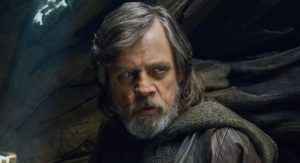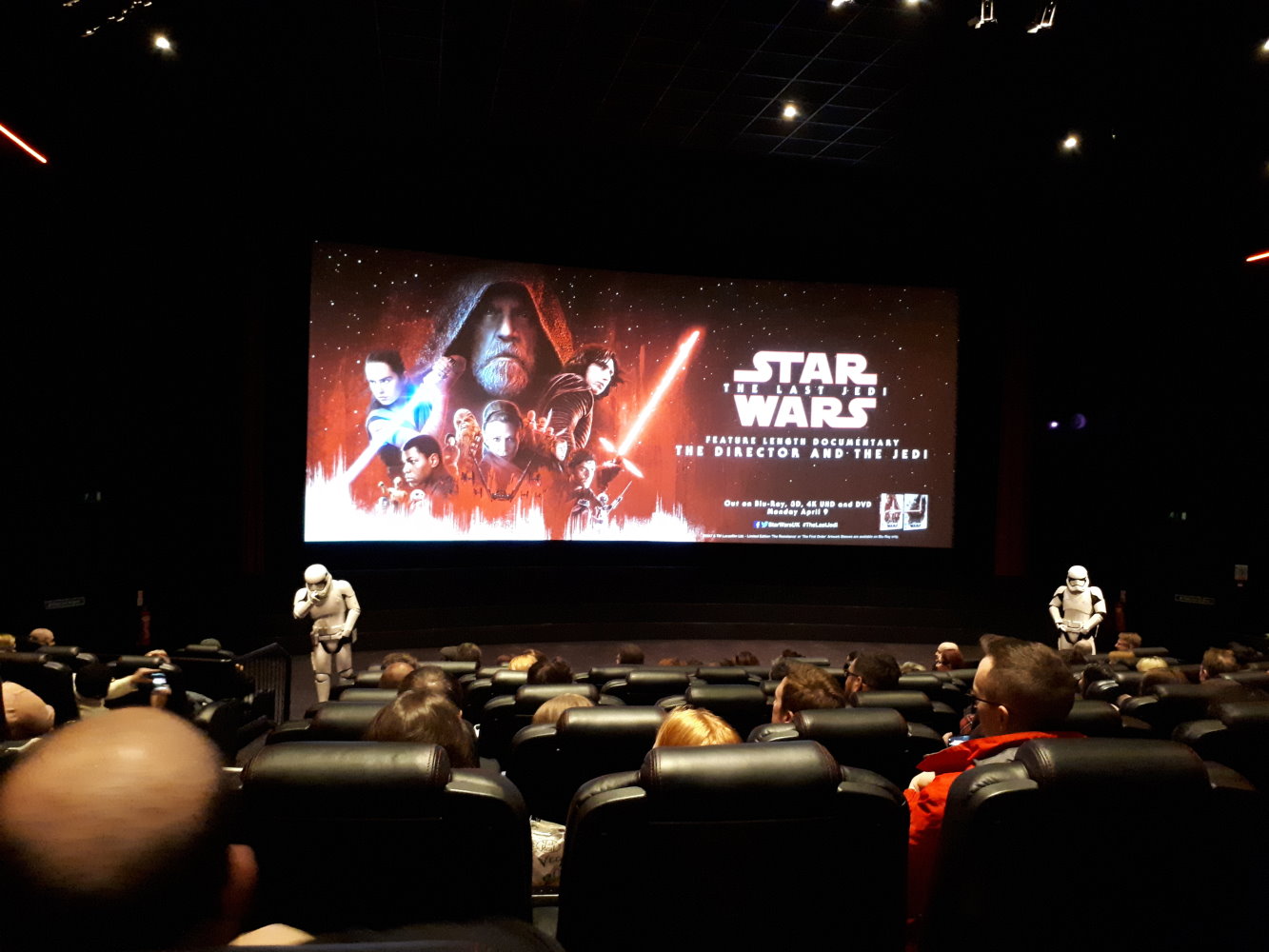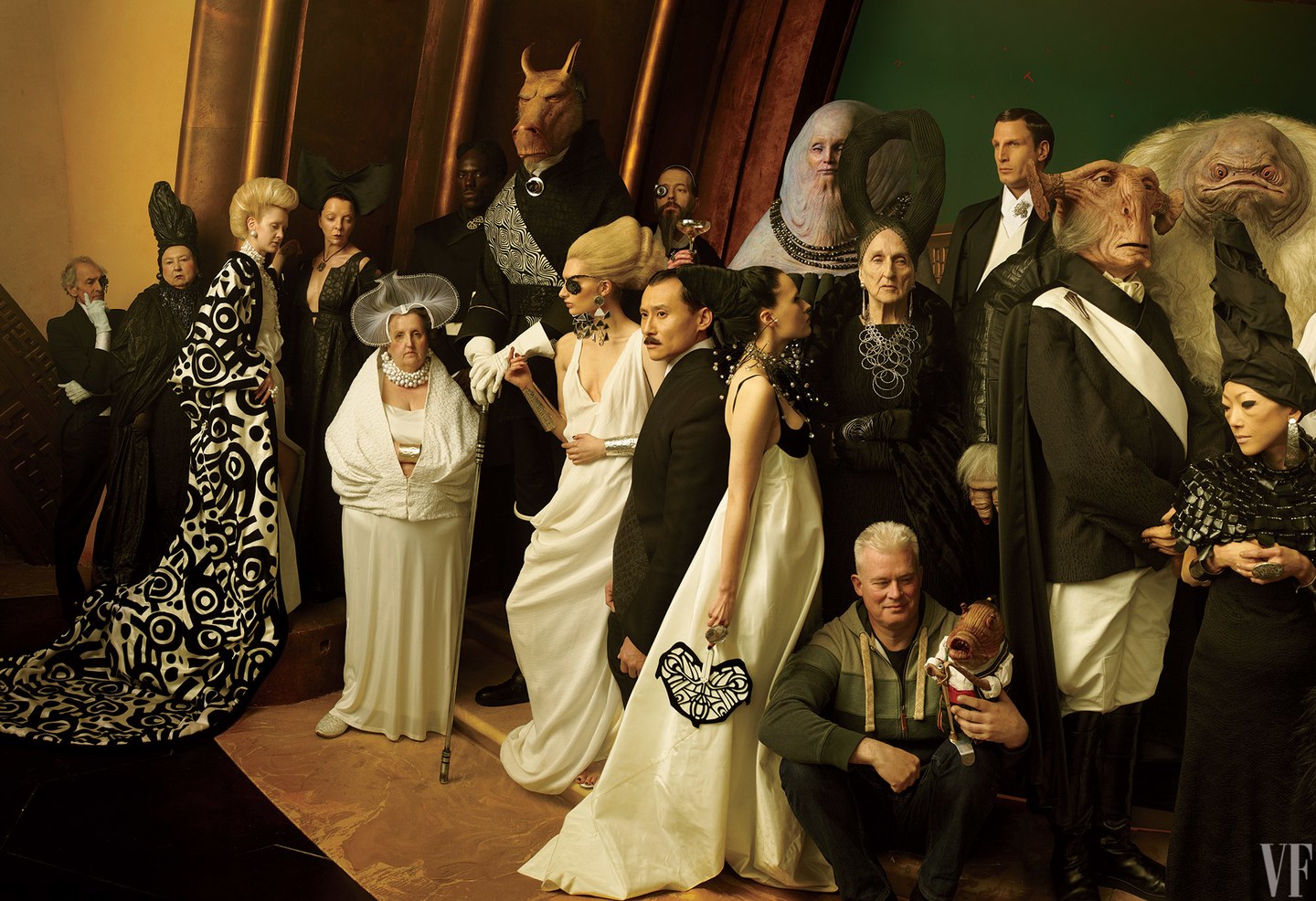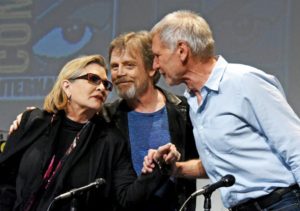 You can question its direction, the story, the mindset of destroying the past to build a new future, even the decision to arguably place its legacy characters – iconic, zeitgeist-fuelling legendary characters – in the backseat, but if The Director and the Jedi shows you nothing else, it proves that the current crop of Star Wars films are made with love and care, blood and guts, sweat and plenty of tears.
You can question its direction, the story, the mindset of destroying the past to build a new future, even the decision to arguably place its legacy characters – iconic, zeitgeist-fuelling legendary characters – in the backseat, but if The Director and the Jedi shows you nothing else, it proves that the current crop of Star Wars films are made with love and care, blood and guts, sweat and plenty of tears.
Rian Johnson’s film has polarised the fandom more than anything since The Phantom Menace almost twenty years ago, but for a very different reason. Back then, Lucas was launching a new trilogy, the first in 16 years one stacked against the good will of the original, untouchable trilogy. It was too big a task, one that brought derision at his decisions and hatred at his choices, something that festered right through to the day he sold Lucasfilm to Disney in 2012.
 Fast forward and Rian Johnson faced a similar dilemma. His bold, brave and mold-breaking film had taken the classic Star Wars model – so successfully revived by J.J Abram’s 2015 smash hit The Force Awakens and Gareth Edwards 2016 Rogue One – by the scruff of the neck, shook it till it squeaked and took the results of that alchemy to concoct The Last Jedi. And it wasn’t for everyone. $1.3 billion in the bank was a good day at the office for sure, but not everyone ‘got’ what Rian and company were pitching at.
Fast forward and Rian Johnson faced a similar dilemma. His bold, brave and mold-breaking film had taken the classic Star Wars model – so successfully revived by J.J Abram’s 2015 smash hit The Force Awakens and Gareth Edwards 2016 Rogue One – by the scruff of the neck, shook it till it squeaked and took the results of that alchemy to concoct The Last Jedi. And it wasn’t for everyone. $1.3 billion in the bank was a good day at the office for sure, but not everyone ‘got’ what Rian and company were pitching at.
For those people, every bit as much as those who enjoyed the film, The Director and the Jedi is essential viewing.
 Let’s be honest, if Rian Johnson had the ego of James Cameron it would be a lot easier to dismiss the film and the goals he was aiming for, but the documentary consistently reinforces the fact that he is a downright likeable, affable, nurturing nerd of the first order. As the middle chapter in the classic trilogy format, The Last Jedi was always going to be the most difficult film to structure and formulate, and so like Lucas before him, Johnson looked outside the box for something unique. The Empire Strikes Back may have only been the second Star Wars film ever made, but it’s vast difference to A New Hope caught audiences off guard. It was a pattern Lucas followed 22 years later when Attack of the Clones masqueraded as a mystery thriller and similarly bamboozled audiences. A safe, linear, conventional Star Wars film may well have satisfied 95% of the fanbase and the cinema going public, but Lucasfilm weren’t looking for that. Enter Johnson and producer Ram Bergman, two men familiar enough with the classic 20th Century Fox era films to know what they were deviating away from but also smart enough to know what elements to keep.
Let’s be honest, if Rian Johnson had the ego of James Cameron it would be a lot easier to dismiss the film and the goals he was aiming for, but the documentary consistently reinforces the fact that he is a downright likeable, affable, nurturing nerd of the first order. As the middle chapter in the classic trilogy format, The Last Jedi was always going to be the most difficult film to structure and formulate, and so like Lucas before him, Johnson looked outside the box for something unique. The Empire Strikes Back may have only been the second Star Wars film ever made, but it’s vast difference to A New Hope caught audiences off guard. It was a pattern Lucas followed 22 years later when Attack of the Clones masqueraded as a mystery thriller and similarly bamboozled audiences. A safe, linear, conventional Star Wars film may well have satisfied 95% of the fanbase and the cinema going public, but Lucasfilm weren’t looking for that. Enter Johnson and producer Ram Bergman, two men familiar enough with the classic 20th Century Fox era films to know what they were deviating away from but also smart enough to know what elements to keep.
 Johnson had a vision and a through-line for the film, but what comes across in the documentary – apart from his obvious glee filming character moments of huge importance to both himself and the characters as well as making memories he will take to the grave – was the size and scope of the production and the weight that bore down on him during its production. The schedule was merciless. Six-day weeks, over 120 days shooting, dozens of sets, location shooting, juggling actors schedules, Mark Hamill’s well documented resistance to the fate of Luke Skywalker….
Johnson had a vision and a through-line for the film, but what comes across in the documentary – apart from his obvious glee filming character moments of huge importance to both himself and the characters as well as making memories he will take to the grave – was the size and scope of the production and the weight that bore down on him during its production. The schedule was merciless. Six-day weeks, over 120 days shooting, dozens of sets, location shooting, juggling actors schedules, Mark Hamill’s well documented resistance to the fate of Luke Skywalker….
Yeah, about that. It’s refreshing that Lucasfilm and specifically Johnson himself would open themselves up in this way. There’s no fudging it, throughout the process Hamill was not impressed with the direction Luke was being taken in, but like the consummate professional he is he gave it 100%. That was illustrated in no more vivid a manner than the destruction of the Jedi academy, a scene shown in Rey’s Takodana visions in The Force Awakens where Luke and R2 watch the destruction of the future of the Jedi in the pouring rain. In The Last Jedi we see the scene realised for ‘real’, as Hamill drops to his knees, his hand on Artoo’s dome, and as Johnson calls cut he simply can’t bring himself to his feet, the emotion too much, the actor lost deep in the moment.
 The physical aspects of Star Wars productions have proved to be a source of fascination for fans since the 70’s. The Making of Star Wars, SPFX: The Making of The Empire Strikes Back, Classic Creatures, From Star Wars to Jedi: The Making of a Saga right through to the unmissable The Beginning and the archive of prequel behind the scenes documentaries. All gave great insight into the making of the saga and made stars of the creative talents not seen on screen. These days it’s people like Neal Scanlan, Lee Towersey and Brian Herring (all present at this screening at the VUE on Leicester Square) who fans are familiar with, bringing back the tactile presence of practical effects and continuing a grand four-decade old tradition.
The physical aspects of Star Wars productions have proved to be a source of fascination for fans since the 70’s. The Making of Star Wars, SPFX: The Making of The Empire Strikes Back, Classic Creatures, From Star Wars to Jedi: The Making of a Saga right through to the unmissable The Beginning and the archive of prequel behind the scenes documentaries. All gave great insight into the making of the saga and made stars of the creative talents not seen on screen. These days it’s people like Neal Scanlan, Lee Towersey and Brian Herring (all present at this screening at the VUE on Leicester Square) who fans are familiar with, bringing back the tactile presence of practical effects and continuing a grand four-decade old tradition.
 Nowhere is that better illustrated than in the Canto Bight sequence. The craft on show is mind-boggling, the ambition dizzying. Take the Mos Eisley cantina, Jabba’s Palace, the Outlander Club and Maz Kanata’s Castle, throw in the streets of Jedha and then make everyone wear ballgowns and tuxedo’s and drink Earl Grey tea from china cups with their pinky fingers sticking out – then and you get some idea of the scale of the set. No wonder John Boyega couldn’t tell if one character was a woman in make-up or an animatronic. The detail of the work is insane.
Nowhere is that better illustrated than in the Canto Bight sequence. The craft on show is mind-boggling, the ambition dizzying. Take the Mos Eisley cantina, Jabba’s Palace, the Outlander Club and Maz Kanata’s Castle, throw in the streets of Jedha and then make everyone wear ballgowns and tuxedo’s and drink Earl Grey tea from china cups with their pinky fingers sticking out – then and you get some idea of the scale of the set. No wonder John Boyega couldn’t tell if one character was a woman in make-up or an animatronic. The detail of the work is insane.
 Of course, the loss of Carrie Fisher looms over both the film and the documentary but hats off to The Director and the Jedi for leaving the sorrow on the sidelines and embracing the irreverence of Carrie. That she was so clearly coming into her own once again as an actor – delicately weaving some poignant and emotional moments between herself and Admiral Holdo (Laura Dern) and most affectingly with her brother Luke on Crait, a scene which even brought a tear to her own eyes – is something to behold, its loss a blow to the series. Leia was back, with Episode IX set to be her film in the spotlight. We lost someone very special on December 26th 2016, but Star Wars lost a huge chunk of its soul.
Of course, the loss of Carrie Fisher looms over both the film and the documentary but hats off to The Director and the Jedi for leaving the sorrow on the sidelines and embracing the irreverence of Carrie. That she was so clearly coming into her own once again as an actor – delicately weaving some poignant and emotional moments between herself and Admiral Holdo (Laura Dern) and most affectingly with her brother Luke on Crait, a scene which even brought a tear to her own eyes – is something to behold, its loss a blow to the series. Leia was back, with Episode IX set to be her film in the spotlight. We lost someone very special on December 26th 2016, but Star Wars lost a huge chunk of its soul.
As The Last Jedi hits home video and the few short weeks trickle down to the release of Solo: A Star Wars Story, it’s worth not only revisiting the film once again but drawing the curtains, making a brew and watching this very special documentary. Rian Johnson and his magnificent crew worked tirelessly to bring a fresh angle to the GFFA. If George was still making Star Wars and heading to the finishing line with Episode IX then the film would naturally been very different, but the Lucasfilm of the modern era is looking into a future with no visible horizon. To allow continued stories and sagas, things inevitably needed to change, the blinkers removed, boundaries broken if Star Wars is to move forward and not wither on the vine of carbon-copy familiarity. Not by breaking the building blocks of Star Wars – steer too far from what Lucas gave us in 1977 and it’s just another franchise film – but by adjusting that certain point of view we’re so familiar with. The Director and the Jedi represents the first real chapter of that sea change, and for its openness and honesty it should surely be commended.

